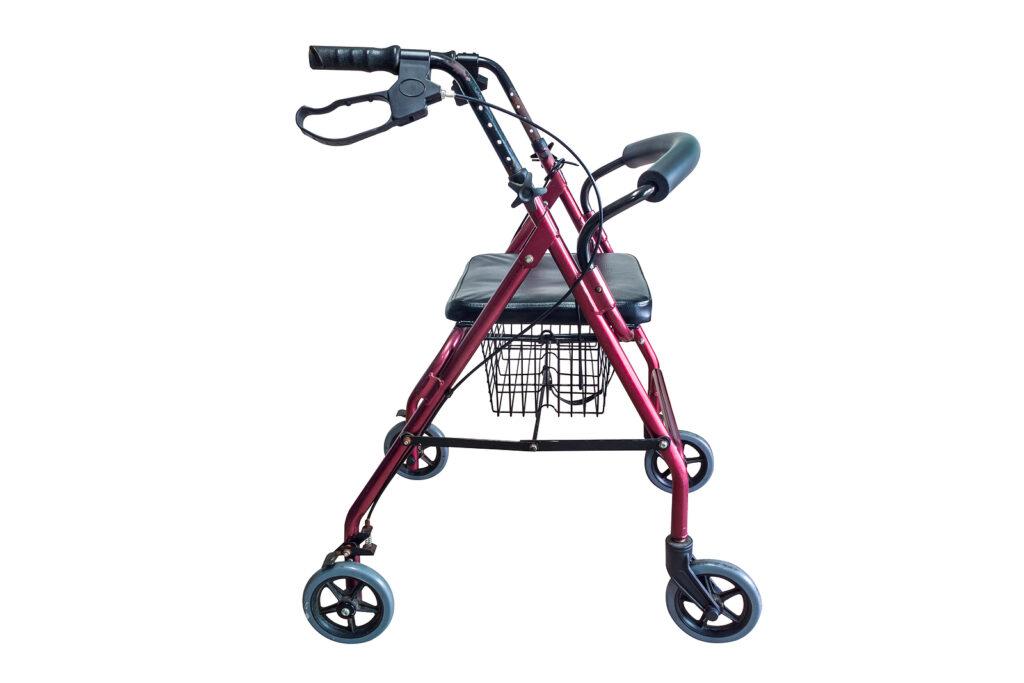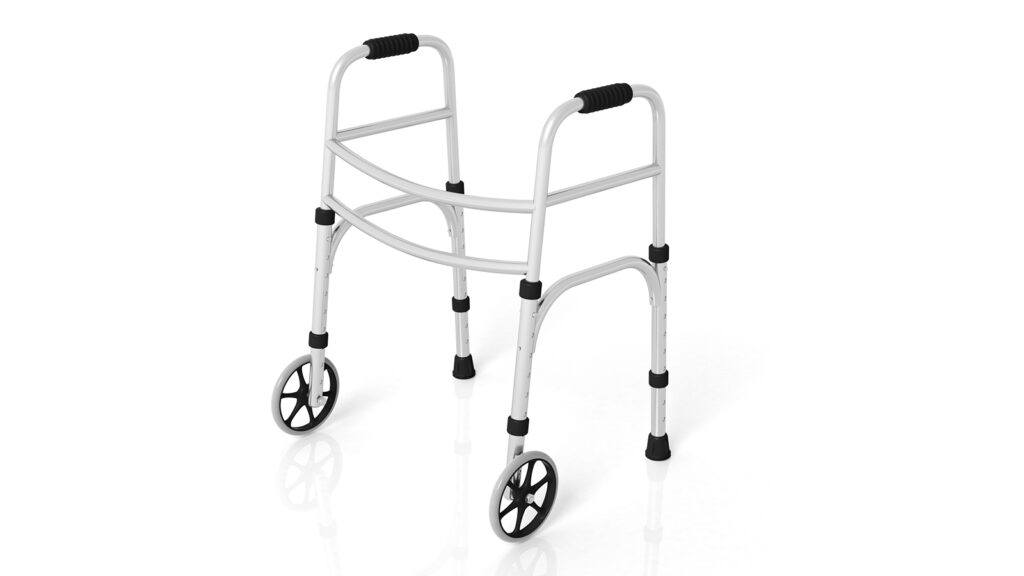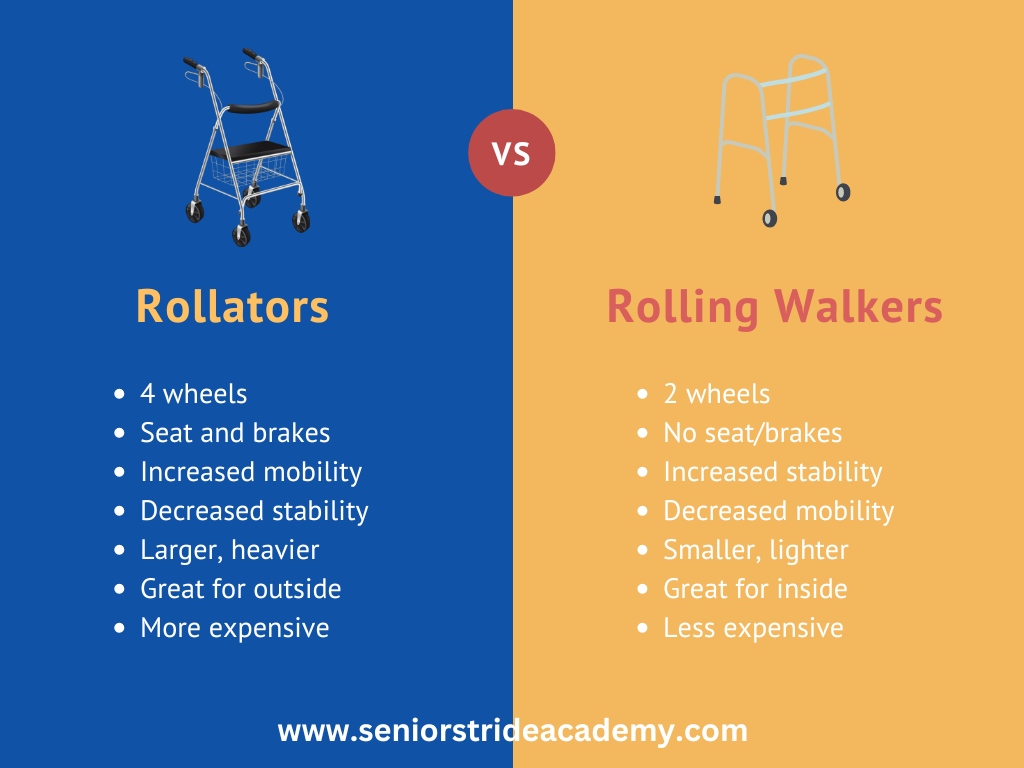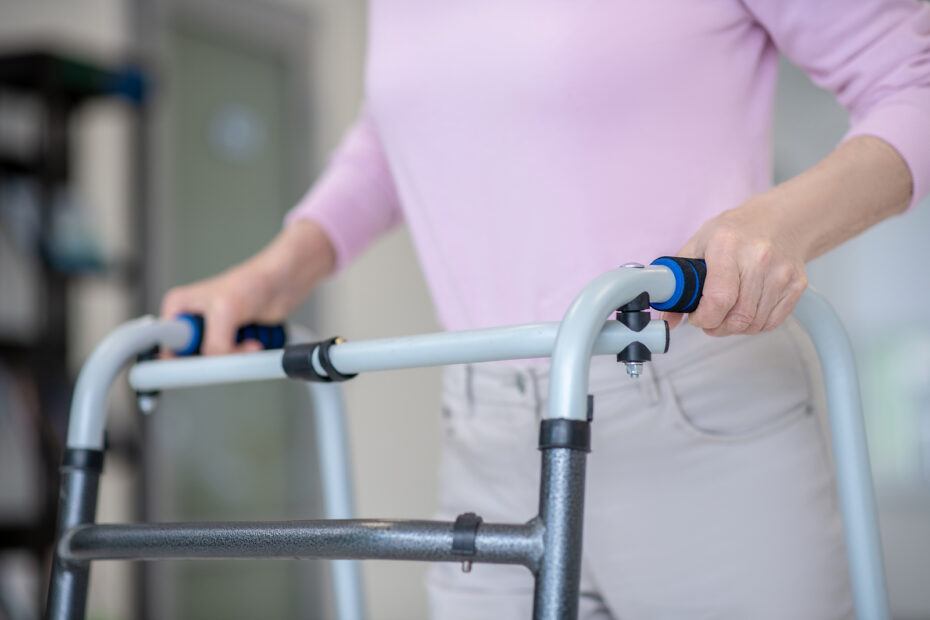Getting around can get tough, especially when our mobility isn’t what it used to be. Luckily, this is where walkers and rollators can come in handy.
Though they might seem similar at first glance, they’re quite different, each having its unique perks and being better suited for different needs.
For example, rolling walkers only have two wheels, making them a little more stable, while rollators have four, allowing them to roll easily over all kinds of surfaces.
Both assistive devices can help make seniors safer while walking, but determining the right one for you depends largely on how and where you plan on using it.
Don’t worry, in this guide we’ll go over everything you need to know about rollators and rolling walkers.
After reading, you’ll know which kind of walker is a better fit for your situation.
Key Features and Functionalities
Before we get too far ahead of ourselves, we should make sure we’re all on the same page with regards to these different kinds of walkers.
After all, there are a lot of different kinds of walkers to choose from these days.
Rollators

Rollators are the cadillacs of walkers.
I say that because they’re fast, smoothing acting, and loaded with features.
Seriously though, rollators do come with a lot of great features that you don’t see on standard and rolling walkers.
The most notable is the fact that rollators come with 4 wheels (you’ll also see 3-wheeled rollators out there which are more compact and don’t come with a seat).
With every leg having a wheel, it means no lifting is required, which makes these devices very easy to glide along while walking.
This makes rollators very mobile, but it does take away from the stability they provide – in other words, rollators are faster moving, so you have to make sure you don’t let them get away from you.
These devices also often come with seats, offering a handy place to rest during longer walks. This is a great perk for seniors that get short of breath easily or like to walk longer distances outside.
Rollators also include brakes for safety, preventing any unwanted rolling when you need to stop.
Many models have baskets or pouches attached, perfect for carrying personal items as well.
It’s also worth knowing that rollators tend to be larger and heavier than other types of walkers, making them a little harder to travel with (although most do still fold in half).
These devices can be used inside homes (as long as you have the floorspace), but they excel at going outdoors.
The 4 large wheels on rollators make them better suited for rolling across pavement and uneven terrain.
Overall, rollators are designed with mobility in mind, but they don’t provide quite as much stability as other types of walkers.
Rollators would be a good choice for seniors with decent balance that are looking to walk longer distances or like the idea of having a built-in seat where ever they go.
Rolling Walkers

Rolling walkers, aka “front wheel walkers”, aka “FWW” are probably the most common type of walker out there.
I have no real data to back that claim up, but I see ’em all the time at my patients houses
And considering how useful they are for in-home use, it makes sense.
Anyway, front wheel walkers consist of lightweight metal frames that have 2 wheels located on the front legs and rubber-tipped ends on the back legs.
This combination of front wheels and legs allows you to push the walker without having to lift it up for each step as you would with a standard walker, but it doesn’t move as fast as a rollator.
This allows rolling walkers to provide a bit more stability, but without completely slowing you down.
Rolling walkers are usually quite a bit lighter, making them easy to move around your home and their ability to fold in half makes for easy storage.
Rolling walkers often work great in homes because they offer a nice level of stability and are easy to move, but they don’t work that well outside.
With only small wheels in the front, front wheel walkers have a hard time moving over any surface that isn’t smooth and paved (gravel driveways are a nightmare).
These walkers don’t have seats either, so they don’t provide a place to sit when the need arises.
Overall, rolling walkers are smaller and not quite as mobile, but they offer more stability than rollators.
A rolling walker could be a smart choice for a senior who needs a little more stability to safely walk or who walks primarily inside.

Choosing the Right Mobility Aid for You
Picking the right mobility aid is all about understanding your unique needs and lifestyle, as mobility levels and environment play a huge role in this decision.
Here are a few common scenarios and the type of walker best suited for each:
- If you’re someone who needs maximum stability and finds it challenging to balance, a rolling walker might be the best choice.
- If you have better balance, but need help due to fatigue when walking longer distances, a rollator is worth considering. Their wheeled design provides more freedom of movement and makes it easier to stroll around and the built-in seat is a great feature if you need to rest often.
- If you need an assistive device primarily for indoor use, you may prefer a rolling walker, as they are smaller, lighter, and easier to maneuver in smaller areas.
- If you need an assistive device primarily for outdoor use, a rollator will likely be the better choice because their large wheels are better suited for handling rough and uneven terrains.
- If you need an assistive device for both indoor and outdoor use, a rollator might be more practical, as it can handle both situations (just make sure you have enough floorspace for comfortable use inside).
Additional Considerations
Before deciding on a rollator or a rolling walker, it’s a good idea to consider the following as well:
- Weight capacity
- Budget
- Storage
Weight capacity and height adjustability are also critical factors.
Ensure any device you consider can support your weight comfortably and adjust to your height for safe, comfortable use.
Fortunately, both walkers and rollators typically offer similar stats here, but always double-check specifications to make sure.
Budget is obviously another consideration.
Walkers are generally more affordable, while rollators tend to be more expensive due to their advanced features.
Exact prices will vary depending on brands and where you purchase, but ballpark, you can expect to drop $35 – $40 for a solid rolling walker and $55 – $85 for a decent rollator.
Final Thoughts
Alrighty, that about does it.
Rollators and rolling walkers are both styles of walkers designed to improve safety with walking, but as you can see, there are plenty of differences between them.
Walkers don’t move quite as fast, making them more stable and better for indoor use.
Rollators, on the other hand, are more mobile, but don’t offer quite as much stability. Their built-in seats and larger size also make them better suited for outdoor use.
That doesn’t mean rollators can’t be used indoors though – as long as you have the room and ability to handle the extra mobility, they can work very well inside.
I also work with plenty of patients that own both devices, using the rolling walker inside and saving the rollator for outdoor excursions.
Ultimately, choosing between these two assistive devices boils down to what you need.
If you need extra stability when walking and don’t need the seat, a rolling walker would make more sense.
But if you plan on walking outside a lot or find yourself in need of a seat on longer walkers, a rollator would be the better choice.
When in doubt, you can always consult with your friendly neighborhood PT.
Feel free to leave a comment or question below and I’ll get back to you shortly.

